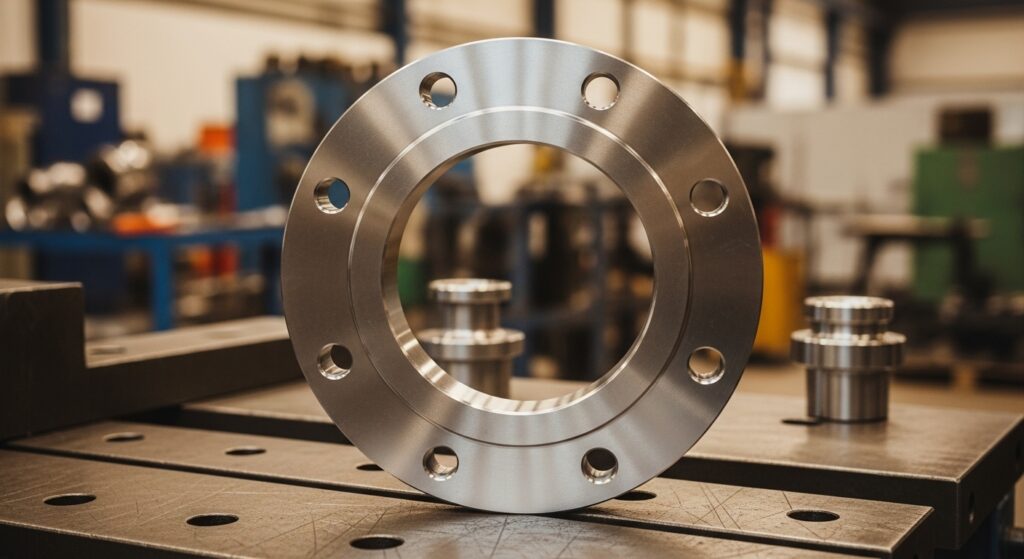Keeping up with API flange standards isn’t just about compliance it’s about safety and performance. The 2025 updates bring important changes that affect how you specify and use these critical components.
You might be thinking, “Do I really need to worry about these updates?” If you work with wellheads, pipelines, or pressure systems, the answer is yes. The latest revisions impact everything from material selection to testing requirements.
Let’s break down what’s changed in simple, practical terms.

Key Changes in API 6A Standards
The API 6A standard covering wellhead equipment has moved to its 21st Edition. While it was officially released in 2023, 2025 is when most projects are fully adopting it.
One significant update involves material documentation. The standard now requires more detailed traceability for all API flange components. This means you’ll see more comprehensive material certificates that follow the component through its entire lifecycle.
A quick tip: The new Annex U creates better alignment between API and ISO standards. This is great news if you work on international projects where you might source equipment from different regions.
Updates to API 6D for Valve Flanges
For pipeline valves, API 6D’s 6th Edition brings clearer testing requirements. The changes affect how flanged-end valves are validated, especially for severe service applications.
One thing to consider is that the updates emphasize performance under fire conditions. The standards now provide more specific guidance on testing valve and flange assemblies to ensure they maintain integrity during emergency situations.
These changes might sound technical, but they matter for your daily work. When you’re reviewing api flange dimensions for your next project, you’ll want to confirm they meet the latest testing protocols.
What These Updates Mean for Your Projects
You’re probably wondering how this affects your api flange sizes and specifications. The good news is that basic api flange dimensions haven’t changed dramatically. The revisions focus more on material quality, testing methods, and documentation.
However, this does mean you should update your procurement specifications. When you work with an api flange manufacturer, you’ll want to verify they’re building to the latest standards.
That’s where working with an experienced partner helps. At API Flange, we’ve already updated our manufacturing and quality control processes to meet these new requirements. Our team can help you navigate the changes smoothly.
Your API Flange Slide Rule Still Works Mostly
If you rely on an api flange slide rule for quick field measurements, you’ll be happy to know the basic dimensions it references remain valid. The updates don’t change the fundamental sizing that your slide rule calculates.
But remember that your slide rule doesn’t show the updated material or testing requirements. It’s still essential to confirm that the flanges you’re installing meet the full current standard, not just the dimensional requirements.
Frequently Asked Questions
Do I need to replace existing flanges that meet older standards?
No, existing installed equipment grandfathered under previous standards typically doesn’t need replacement. The new standards apply to new purchases and projects. Always consult specific regulatory requirements for your application.
Have API flange dimensions changed in the 2025 updates?
Basic dimensions for most standard api flange sizes remain the same. The significant changes involve material traceability, testing protocols, and documentation requirements rather than physical measurements.
How can I verify a manufacturer meets the latest API standards?
Look for manufacturers who provide current API monogram certification and detailed material test reports. Reputable suppliers like Texas Flange clearly state their compliance with the latest API 6A and 6BX revisions. clearly state their compliance with latest revisions.
Where can I get updated dimension charts?
The API standards documents themselves contain the complete dimension tables. Many manufacturers also provide helpful reference guides. For current api flange dimensions, check resources like flange dimensions which are regularly updated.
What’s the most important change for procurement teams?
The enhanced material traceability requirements. You’ll need to ensure your api flange manufacturer provides complete documentation showing material origin and processing history for each component.
Are the updates different for different pressure classes?
The core updates apply across pressure ratings, but implementation may vary. Higher pressure classes like 15,000 psi may have additional testing requirements compared to standard 5,000 psi flanges.
Ready to Update Your Flange Specifications?
Staying current with API standards ensures your projects meet the latest safety and performance requirements. While the changes might seem complex, working with the right partner makes compliance straightforward.
We specialize in helping engineers and procurement professionals navigate these updates. Our team understands both the technical requirements and the practical implications for your projects.
Need help understanding how the 2025 updates affect your specific application?
Reach Out to Our Team for expert guidance and flanges that meet the latest API standards. We’ll make sure your next project is both compliant and successful.